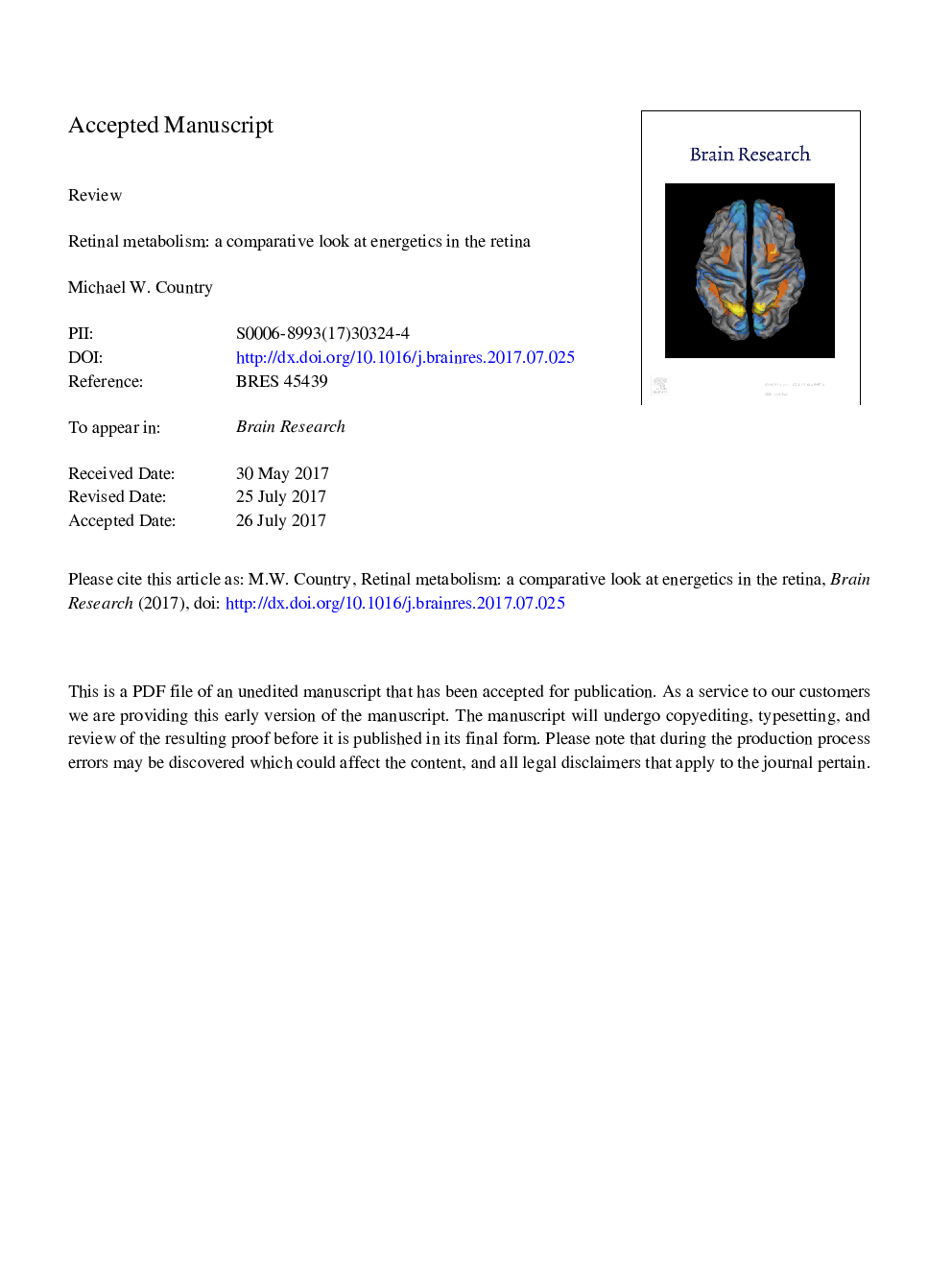| کد مقاله | کد نشریه | سال انتشار | مقاله انگلیسی | نسخه تمام متن |
|---|---|---|---|---|
| 5736630 | 1613773 | 2017 | 26 صفحه PDF | دانلود رایگان |
عنوان انگلیسی مقاله ISI
Retinal metabolism: A comparative look at energetics in the retina
ترجمه فارسی عنوان
متابولیسم مجاری ادراری: یک نگاه تطبیقی به انرژی در شبکیه
دانلود مقاله + سفارش ترجمه
دانلود مقاله ISI انگلیسی
رایگان برای ایرانیان
کلمات کلیدی
شبکیه چشم، انرژی متابولیسم، متابولیسم، ایسکمی، هیپوکسیا،
موضوعات مرتبط
علوم زیستی و بیوفناوری
علم عصب شناسی
علوم اعصاب (عمومی)
چکیده انگلیسی
The retina is part of the central nervous system, and shares the characteristically high metabolism of the brain. The high energy demand of the retina is normally matched with a large supply of metabolites. When supply does not equal demand (e.g. if retinal blood flow is impaired), retinal neurons are at risk of excitotoxic cell death and vision is impaired or lost. Understanding the energetic budget of the retina is therefore crucial for understanding the pathology and treatment of retinal disease. In this minireview I give an overview of the energetics of the retina, with a focus on lessons learnt from comparative physiology. Retinas of all species studied thus far receive blood flow from choroidal capillaries. Additionally, fish, reptiles, and birds each have unique structures to increase metabolite supply. Primates and some mammals also have intra- and supraretinal vasculature to supply the retina, while other mammals rely solely on the choroid at the cost of retinal thickness. Neuroglobin, an oxygen-binding protein, may assist in oxygen delivery to counteract large diffusion distances from capillaries to mitochondria. Energy demand differs among models, as does mitochondrial location. More ATP is consumed in the dark due to Na+/K+ ATPase activity to counteract the dark current, whereas phototransduction dominates ATP demand in the light. Photoreceptor metabolism is therefore especially high, and may be sustained with phosphocreatine and lactate shuttles. This comparative physiology approach raises new research questions, and suggests caution in comparing animal models of retinal disease, as they differ greatly in vasculature and energetics.
ناشر
Database: Elsevier - ScienceDirect (ساینس دایرکت)
Journal: Brain Research - Volume 1672, 1 October 2017, Pages 50-57
Journal: Brain Research - Volume 1672, 1 October 2017, Pages 50-57
نویسندگان
Michael W. Country,
